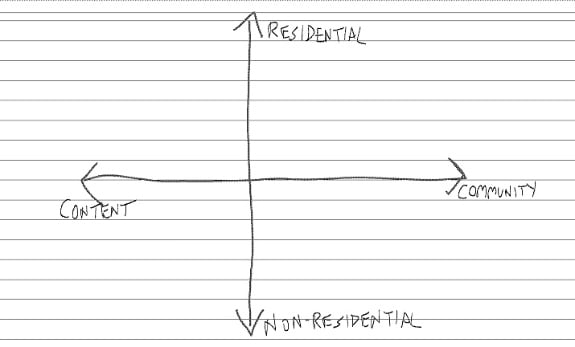Virginia Commonwealth University professor Jon Becker recently drew the diagram below to illustrate what he identified as some of the dichotomies in our discussions about MOOCs and online higher education:

Content and community on the X-axis. Residential to non-residential on the Y-axis. I think I’d want to add more axes too – certification, cost – but golly, I make lousy diagrams.
Becker’s drawing helps highlight how most of what’s discussed (by the press, specifically) vis-a-vis the impact of technology on higher ed involves the left-hand side: that is, how technology will impact content delivery. Take, for example, the buzz about Udacity, Coursera, and edX. (The discussions also focus on the axes I’d add – how much college costs, the necessity of a college degree.)
As a result, we are overlooking a lot of other things that college provides at the other end of that X-axis: the “community” element that connects us to other learners, like-minded individuals, scholars, experts, colleagues, team members, recommendation-letter-writers and so on. And by extension, we largely ignore how technology could affect that. But I think there’s plenty of opportunity – for startups and for institutions – to use technology to enhance the community side of the equation too. Online community is, of course, part of the impetus of the first connectivist MOOCs. It’s what drives DS106. Offline, it’s what makes the network of a Harvard MBA so powerful too, I should add.
And it’s one of the things that makes Fidelis such an interesting startup.
Read the rest of the story on Inside Higher Ed